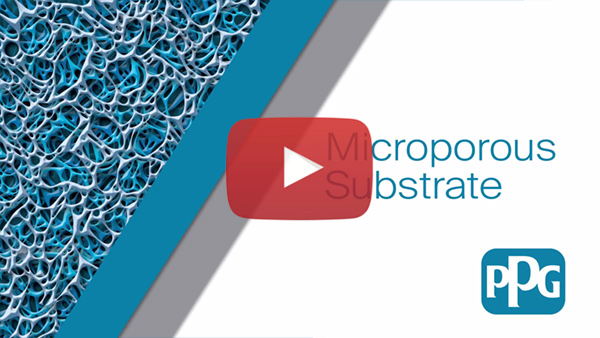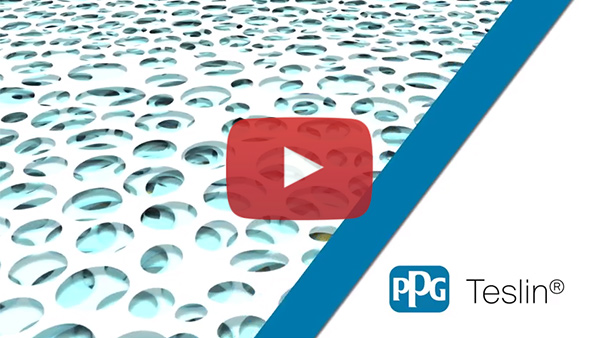Once you know what synthetic paper is, you can start considering it to solve any number of challenges. Different types of synthetic papers perform differently depending on usage conditions however, so you'll want to be clear about the performance needs of your project. In addition, because of their added benefits, virtually all the choices are costlier than conventional paper, so it’s important to choose wisely.
If you are a printer, it’s essential to do your homework about the characteristics of different papers so you don’t recommend an option that fails in production or use. The low price or familiar choice isn’t always the right answer; use of the wrong paper can result in lost time, money or customers.
Whether you are a printer, designer or a brand manager, consider these factors to narrow down the synthetic paper options that will best meet your end-use criteria.
-
Environment
Where will your printed item be used? Indoors or outdoors? Will it be subjected to varying degrees of moisture or UV light, which could cause fading or other degradation? Will it be exposed to chemicals or harsh conditions?
-
End-Use Handling
Will your final paper product need to fold, bend or roll? How much handling and abrasion must it withstand? Durability needs can significantly impact synthetic paper selection.
-
Shelf Life
How long does it need to last? For labeling, in particular, consider the life expectancy of your product. Some labeled products will have a much shorter lifespan and may not require a highly durable paper stock.
-
Printing Methods
Given the specifications, what printing option will best suit the project? Will you use offset, digital, laser or inkjet printing? Or perhaps you desire to print fixed information using one technology then add variable information using another?
Many different synthetic papers – with the exception of PPG TESLIN® substrate – require special inks or coatings and can have performance limitations based on which printing processes are employed. It should be noted that with the exception of Teslin substrate, synthetic papers should not be use in laser printers, copiers or fax machines due to high heat that can sometimes melt the substrate and lead to equipment damage.
-
Production Specifications
What paper sizes, strengths, and weights are needed? What quantities will you produce? Will your piece be personalized or customized in other ways? Most synthetic papers are available in standard and custom sized sheets and rolls. Minimum order quantities (MOQ) can vary by manufacturer, but most synthetic papers are available in small quantities through paper merchants and online retailers.
-
Finishing
Does the final product require lamination, stitching, stamping, grommets, perforations, embossing, punching or other finishing? If needed, how will it be bound? Synthetic papers perform very differently, depending on the desired finishing technique.
-
Visual Appearance and Aesthetics
How important are aesthetics to the final piece? Is precision critical for elements such as small type or intricate imagery? Are visual needs utilitarian or artistic? Some papers can print more vividly and with more definition than others. Texture, whiteness and rigidity also vary.
-
Security
Are you printing secure or encrypted documents? Are multiple layers of security features needed? Are you embedding RFID technology into your final product? There are only a couple synthetic papers that are appropriate for these specialized needs.
-
Bondability
Will you need to laminate the product? In the case of labels, what level of adhesive must you use? If it is a label, what surface will it adhere to? How important is it for the paper to be flexible when bonded or attached to other materials?
-
Speed
Ask printers or paper manufacturers how quickly the paper will run through printers and what to expect for drying time. Ink drying times vary greatly among synthetics depending on the print process, from nearly instantly for Teslin substrate to hours or day for some other types.
Because synthetic papers evolved from so many different companies, they can vary dramatically from one another in performance, appearance and price. If you know the basics about synthetic paper, plan well, and ask the right questions, you’ll have far greater confidence that your project will be printed right the first time – on time and on budget.
Ready to get started? Learn about Teslin synthetic paper applications and uses or request a sample.
Typical Applications
- Industrial labels
- Durable product labels
- Restaurant menus
- Laminated cards
- Waterproof maps
- Heavy-duty manuals
- Racing bibs
- Wristbands
- Ultra-durable POP advertising

Learn about Teslin substrate and its performance benefits.
 See the many applications that Teslin substrate is used for.
See the many applications that Teslin substrate is used for.